.webp)
.webp)
The Shocking Truth About Electric Furnace Installation
Uncover the real costs and benefits of electric furnace installation. Get expert insights for your home heating needs.
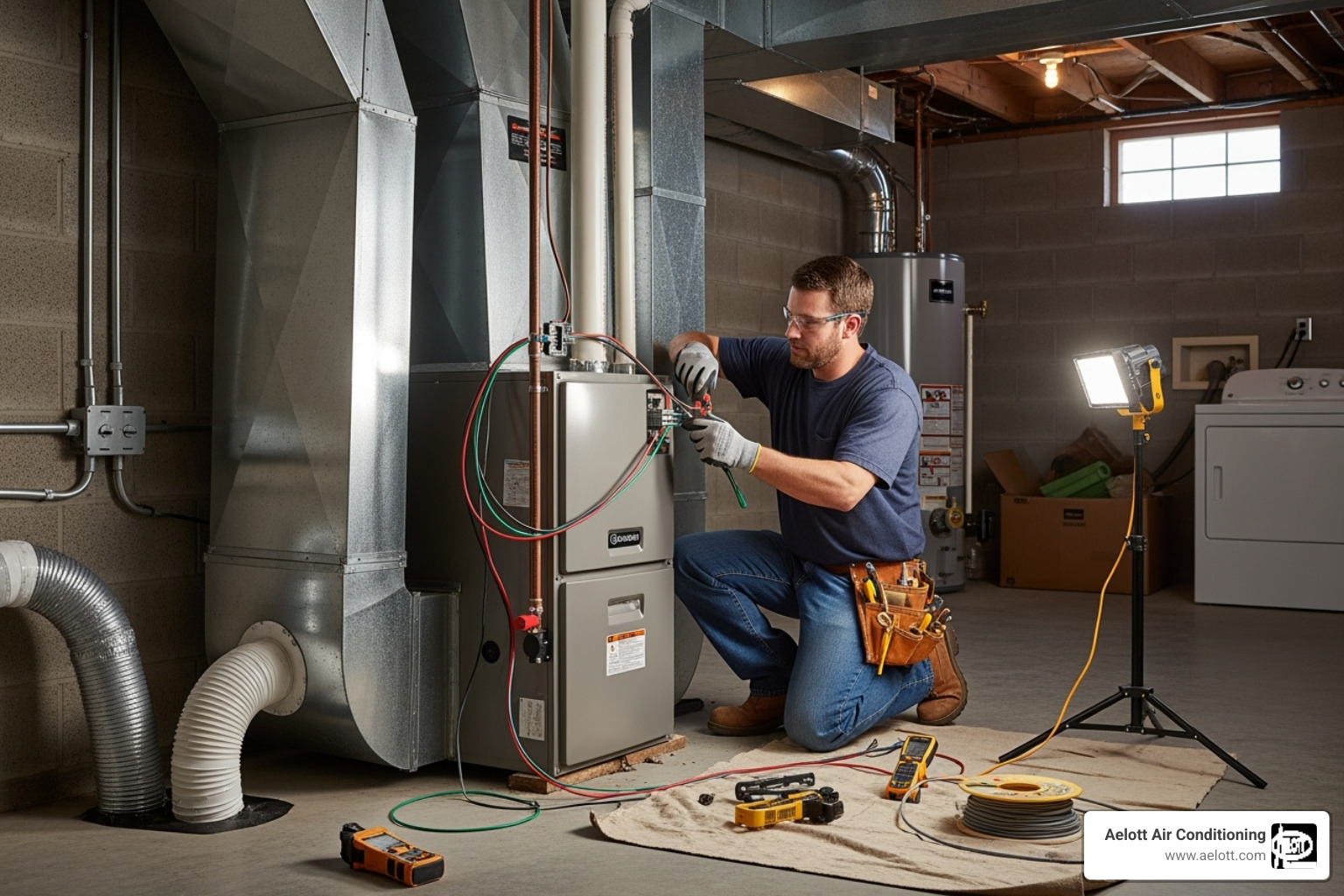
Why Electric Furnace Installation Is More Complex Than You Think
Electric furnace installation might seem straightforward, but there's more to it than plugging in a new heating unit. While electric furnaces offer impressive benefits like 100% efficiency and 20-30 year lifespans, proper installation requires careful planning, electrical upgrades, and professional expertise.
Key Steps for Electric Furnace Installation:
- Size calculation - Manual J load calculation based on home square footage and climate zone
- Electrical requirements - Dedicated circuit, heavy-duty wiring, and proper breaker sizing
- Professional installation - Licensed HVAC technician connects ductwork, wiring, and venting
- Safety inspection - Final testing and code compliance verification
- System commissioning - Thermostat setup and operational testing
The reality is that installing an electric furnace is not a DIY project. As one installation manual warns, "DIY furnace installations are illegal in most places and highly dangerous." The process involves complex electrical work, potential ductwork modifications, and strict safety requirements that only certified professionals should handle.
Why professional installation matters:
- Electrical safety and code compliance
- Proper sizing to avoid energy waste
- Warranty protection
- Long-term system reliability
For North County San Diego homeowners, understanding these installation requirements upfront helps avoid costly surprises and ensures your new electric furnace operates safely and efficiently for decades.
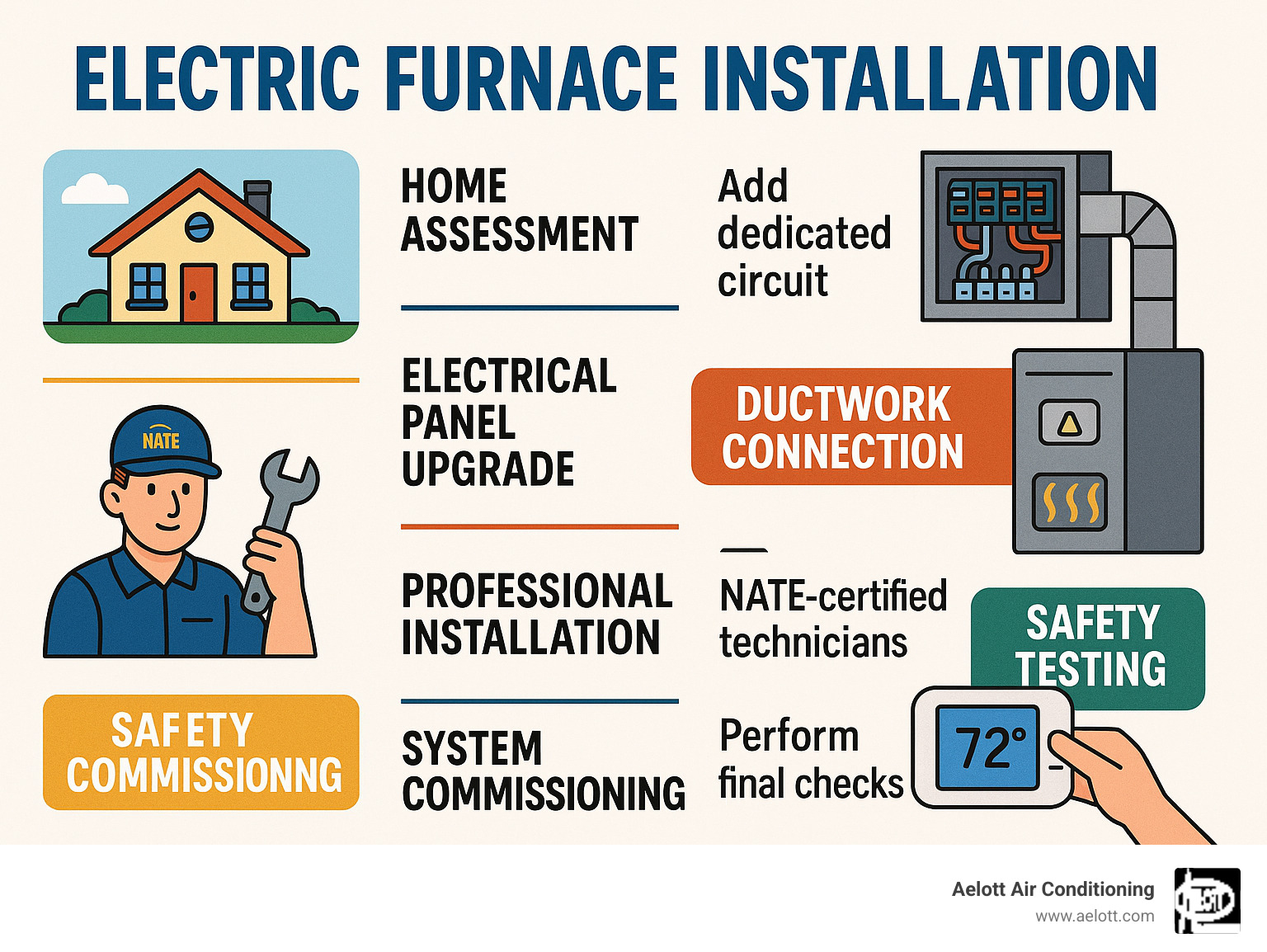
Why Choose an Electric Furnace? Benefits vs. Reality
Considering an electric furnace for your Escondido home? It's a popular choice, but it's wise to weigh the benefits against the realities before deciding.
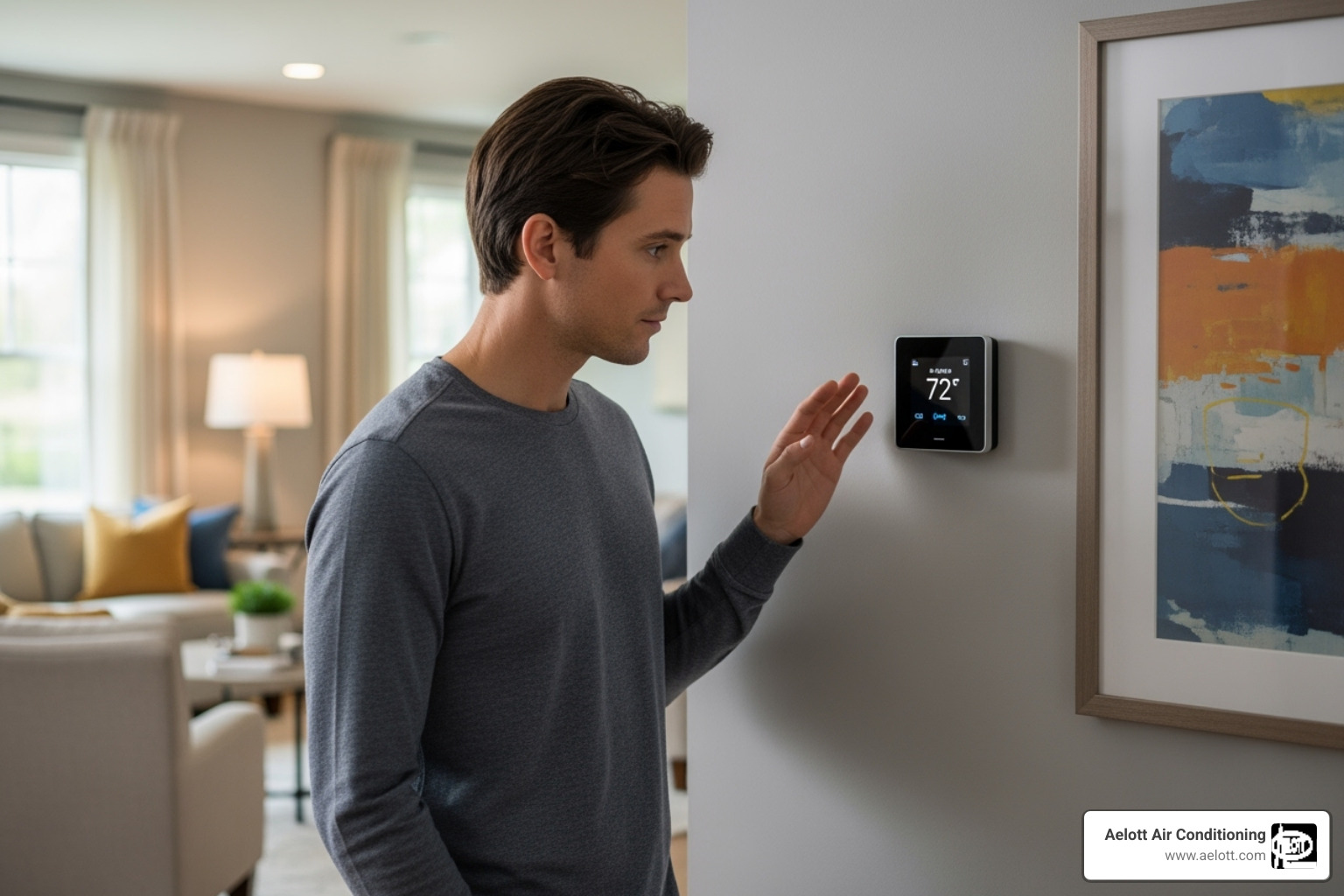
Electric furnaces deliver 100% efficiency, converting all electricity used directly into heat, unlike gas furnaces that lose some energy through venting. Their lower upfront costs are also a major draw, as the lack of gas lines or venting simplifies the electric furnace installation process.
Other benefits include quiet operation due to no combustion, and installation flexibility, as they don't require outdoor venting. For your family's health, they offer improved indoor air quality by not producing combustion byproducts like carbon monoxide. Finally, their longer lifespan of 20 to 30 years offers excellent long-term value, often lasting a decade longer than gas units.
On the other hand, electricity typically costs more per unit of heat than natural gas, which can lead to higher monthly bills. The real cost of electricity in the US varies, so check your local rates. Electric heat can also feel drier, and power outages will leave you without heat.
Key Factors to Consider Before You Buy
To ensure the right fit, we assess several factors for your home:
- Home size: This dictates the required heating power. An improperly sized unit will either struggle to heat your home or cycle inefficiently, wasting energy.
- Climate zone: We factor in Escondido's weather patterns to ensure your system has adequate heating capacity during cold snaps.
- Insulation quality: Better insulation means less heating power is needed. We assess your home's ability to retain heat.
- Existing ductwork: Leaky or poorly designed ducts waste heated air. We inspect your current system for necessary improvements.
- Electrical panel capacity: Electric furnaces draw significant power and often need dedicated circuits and panel upgrades, which we check to avoid surprises.
Getting the right fit requires a whole-home approach. Check out our comprehensive HVAC Installation Services to see how we make the process smooth and worry-free.
The Real Cost of Electric Furnace Installation
Let's discuss the investment for your new electric furnace installation. Budgeting is a key concern for homeowners, and we believe in full transparency.
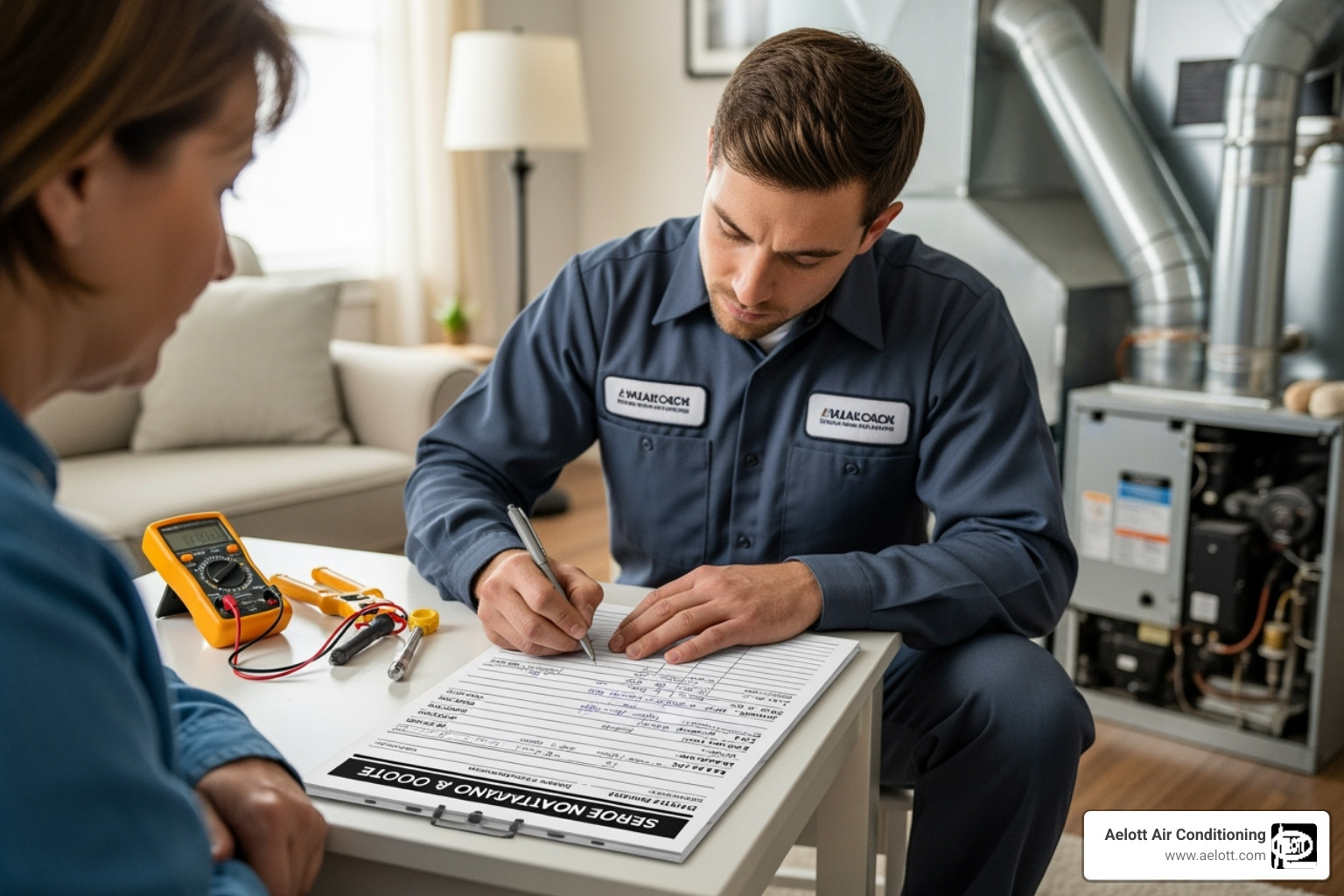
The total cost is more than just the furnace itself. The final investment includes the unit cost, labor costs for certified technicians, permit fees, and old furnace removal.
Many homes also require additional work. This can include ductwork modifications for optimal airflow, a modern thermostat upgrade, and crucial electrical system upgrades. Electric furnaces are powerful, so your electrical panel may need a new dedicated circuit breaker to handle the load safely.
Since 1963, we've handled every type of installation, from simple to complex. We always provide detailed, transparent quotes that break down every component of your investment so there are no surprises.
Breaking Down Your Electric Furnace Installation Quote
When we provide an electric furnace installation quote, we explain where every dollar goes. Here's what's typically included:
- Furnace Unit: The cost varies based on the size and features your home needs. We help you select the right capacity without overspending.
- Labor Costs: This covers the expertise of our NATE-certified technicians to ensure a safe, reliable, and long-lasting installation.
- Ductwork Modification: We often need to adapt ductwork to connect the new furnace and seal all connections to prevent heat loss and maximize efficiency.
- New Thermostat: Upgrading to a smart thermostat can improve convenience and help you save money by automating temperature adjustments.
- Electrical Upgrades: For safety, electrical panel upgrades and a dedicated circuit breaker installation are often necessary. Our electricians ensure your home's system can handle the power draw and meets all local codes.
We also manage all logistics, from pulling permits to disposing of your old system. Transparent pricing builds trust, and we want you to know why each component matters for your home's comfort and safety. You can learn more about our approach as one of the trusted Furnace Companies in Escondido, CA.
The Professional Installation Process: A Step-by-Step Overview
An electric furnace installation is a complex process involving HVAC and electrical expertise that requires certified professionals to perform safely.
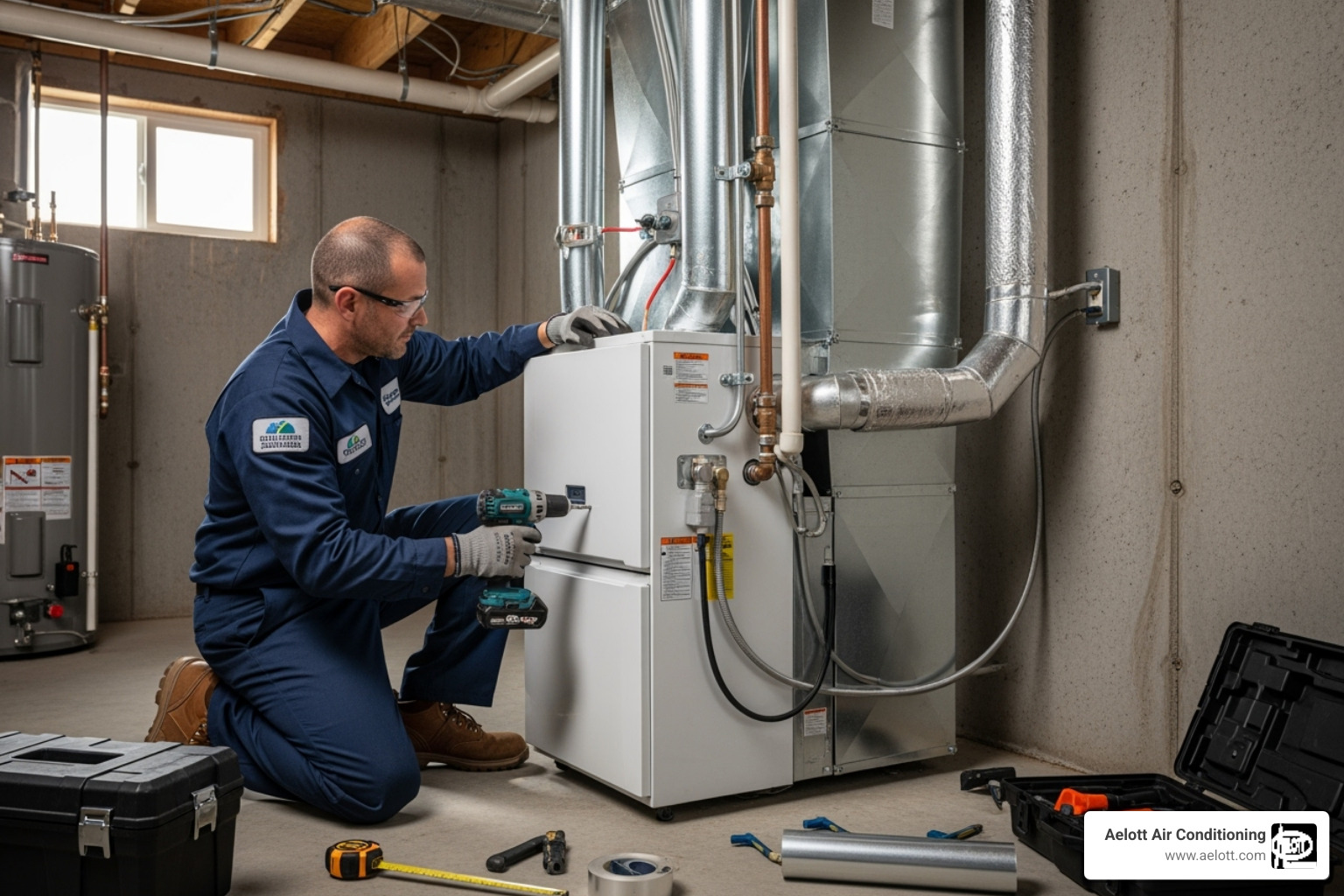
Our process, refined since 1963, prioritizes safety and precision:
- Safety Precautions: We begin every job by shutting off the main power supply to ensure a safe work environment.
- Disconnecting the Old Unit: Our team carefully detaches the old system's electrical and ductwork connections and handles its proper removal and disposal.
- Preparing the Space: We clear the area, ensure the surface is level, and verify adequate clearance for airflow and future service.
- Setting the New Furnace: We precisely position the new unit on its base, making sure it's level and stable.
- Connecting Ductwork and Vents: Our technicians expertly attach the furnace to your duct system, using professional-grade seals to create airtight connections and prevent heat loss.
- Wiring Connections: Our licensed electricians handle all wiring, connecting the furnace to its dedicated circuit and ensuring every connection is secure and up to code.
- Final Testing: We conclude with a comprehensive safety check, testing airflow, heating elements, and thermostat communication to ensure your new system runs perfectly.
Sizing Your Furnace: Getting It Just Right
Incorrect furnace sizing is a common and costly mistake that leads to inefficiency and discomfort. An undersized furnace will run constantly, while an oversized one will short-cycle, wasting energy and causing premature wear.
We use the industry-standard Manual J load calculation for precise BTU calculations. This assessment considers your home's square footage, ceiling height, windows, insulation, and local Escondido climate. The impact of home size and insulation is critical; a well-insulated home needs a smaller furnace than a drafty one of the same size. Proper sizing ensures your furnace operates at peak efficiency and lasts its full 20-30 year lifespan. If your current system turns on and off too frequently, you may be experiencing this issue: Why Your HVAC System Might Be Short Cycling.
Key Electrical Requirements for Electric Furnace Installation
Electric furnaces have significant electrical requirements that demand professional installation for safety and efficiency.
- Dedicated Circuit: Every unit needs its own circuit to get consistent power and prevent overloads.
- Heavy-Duty Wiring: Standard wiring is insufficient. We install the appropriate gauge wiring to safely handle the high amperage.
- Breaker Size: The breaker must be matched to the furnace's kilowatt rating to provide proper overcurrent protection without nuisance tripping.
This complex electrical work is potentially dangerous and should only be handled by a professional electrician or our NATE-certified technicians. DIY work is often illegal, voids your warranty, and poses a serious safety risk. You can verify any NATE-certified technician's credentials here: Find a NATE-certified technician.
Life After Installation: Maintenance and Troubleshooting
Your new electric furnace installation is complete, but proper maintenance is key to its long-term performance and efficiency.
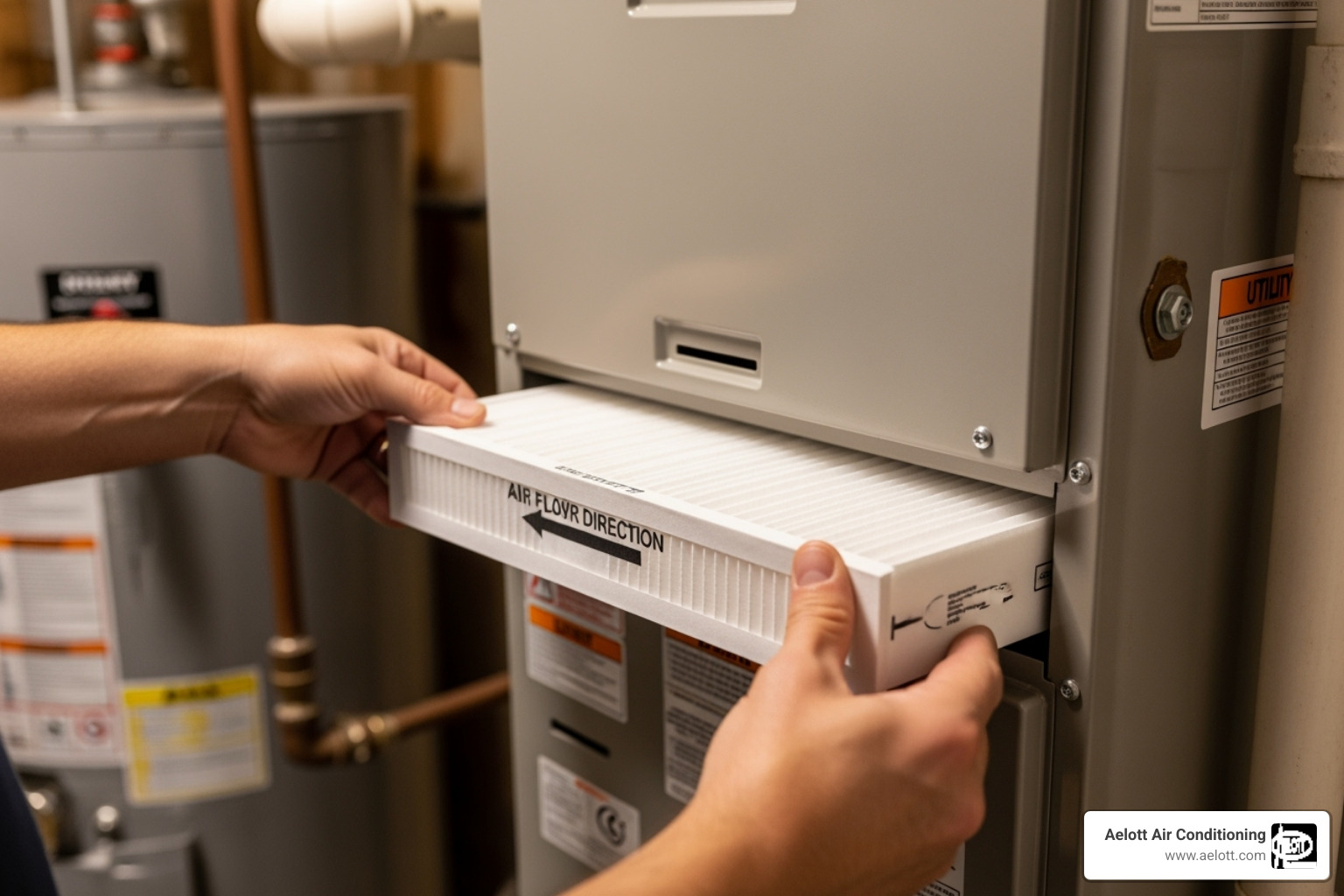
Regarding operational costs, while the furnace is 100% efficient, electricity often costs more than natural gas, potentially leading to higher monthly bills. However, proper maintenance helps manage these costs and ensures your unit reaches its impressive lifespan of 20 to 30 years.
Even well-installed furnaces can develop common problems like uneven heating, strange noises, or failure to turn on. Regular care can prevent many of these issues. Key maintenance tasks include:
- Replacing Air Filters: This is the most important DIY task. A clogged filter restricts airflow and strains the system. Check it monthly and replace every 1-3 months.
- Professional Cleaning: The air blower and motor housing should be cleaned professionally to maintain performance.
- Inspecting Belts and Pulleys: During annual tune-ups, our team checks these for wear and replaces them proactively.
- Annual Professional Inspection: Before heating season, have a NATE-certified technician inspect all electrical connections, heating elements, and safety controls to catch small issues before they become major problems.
Simple Troubleshooting Tips for Homeowners
If your furnace isn't working correctly, try these simple steps before calling for service:
- Check your thermostat: Ensure it's set to "heat" and the temperature is set higher than the current room temperature. Check the batteries if applicable.
- Inspect the circuit breaker: Go to your electrical panel and see if the furnace's breaker has tripped. If it trips repeatedly, call a professional.
- Replace the air filter: A clogged filter is a frequent cause of furnace issues. Learn more about The Importance of Changing Air Filters Regularly.
- Ensure vents are open: Walk through your home and make sure all supply and return vents are open and not blocked by furniture or drapes.
If these steps don't solve the problem, our professional team has the tools and expertise to diagnose and fix the issue quickly.
Frequently Asked Questions about Electric Furnaces
We've been helping homeowners with electric furnace installation and service since 1963, and over the years, we've heard just about every question you can imagine! Here are the most common ones we get, along with our honest, straightforward answers.
How long can an electric furnace be expected to last?
Here's some great news: an electric furnace can last 20 to 30 years with proper maintenance, which is significantly longer than the 15-20 year lifespan of a typical gas furnace. That's like getting an extra 5 to 10 years of reliable heating!
The secret to reaching that impressive 30-year mark? Regular service is absolutely key. Think of it like taking care of your car – the better you maintain it, the longer it runs smoothly. Electric furnaces have fewer mechanical parts than other heating systems, which means there's simply less that can go wrong over time.
What really sets electric furnaces apart is their robust design. Without the combustion process that wears down gas furnaces, electric units face less stress and corrosion. Our annual maintenance checks help maximize your unit's lifespan, catching small issues before they become big problems. We've seen well-maintained electric furnaces still going strong after 25 years!
Are electric furnaces truly 100% efficient?
Yes, electric furnaces do have an AFUE (Annual Fuel Utilization Efficiency) rating of 100%, meaning all the electricity they consume gets converted directly into heat. Pretty impressive, right? At the point of conversion, they're incredibly efficient – there's no waste like you'd see with combustion-based systems.
But here's the full picture: while the furnace itself doesn't lose energy, overall system efficiency can be affected by heat loss through poorly sealed ductwork or inadequate home insulation. It's like having a perfectly efficient coffee maker but drinking from a cup with holes in it!
That's why we always emphasize the importance of maintaining your ductwork and ensuring proper home insulation. During our installations, we carefully seal all duct connections to prevent heat loss. Even the most efficient furnace can't overcome leaky ducts or poor insulation, so we take a whole-home approach to maximize your heating efficiency.
Which is cheaper to run: a gas or an electric furnace?
This is probably our most frequently asked question, and the honest answer is that generally, a gas furnace is cheaper to run. While electric furnaces are incredibly efficient at converting energy to heat, the cost of electricity per unit of energy is typically higher than natural gas in most regions.
Here's what this means for your wallet: despite the electric furnace's 100% efficiency, your monthly utility bills for heating might be higher compared to a gas furnace. It's one of those situations where efficiency doesn't always translate to lower costs.
However, this comparison isn't always cut and dry. The actual costs depend on local electricity and natural gas rates, the efficiency of your home's insulation, and your specific climate. We've worked with homeowners where electric made more sense financially, especially when factoring in installation costs and long-term maintenance.
For homes without access to natural gas lines, an electric furnace remains an excellent and often the most practical heating solution. Plus, you get benefits like cleaner indoor air, quieter operation, and that impressive 20-30 year lifespan we mentioned earlier.
Conclusion
When you first started reading about electric furnace installation, you might have thought it was as simple as swapping out one heating unit for another. But as we've finded together, there's so much more beneath the surface – and that's actually a good thing for your home's comfort and safety.
The journey we've taken through electric furnaces reveals some pretty impressive benefits. These heating systems offer remarkable energy efficiency, converting every bit of electricity into warmth for your family. They're built to last 20 to 30 years, operate whisper-quiet, and create cleaner indoor air without any combustion byproducts. That's a lot to love about these hardworking units.
But here's what really matters: safety first, always. The electrical requirements, the precise sizing calculations, the careful ductwork connections – these aren't just technical details. They're the foundation of a heating system that will keep your family warm and safe for decades to come. This is exactly why professional expertise isn't just recommended, it's absolutely essential.
When you choose qualified, NATE-certified technicians for your installation, you're investing in more than just a heating system. You're securing long-term value for your home. Proper installation means your electric furnace will operate at peak efficiency, maintain its warranty protection, and deliver consistent comfort year after year.
At Aelott Air Conditioning, we've been part of the Escondido community since 1963. That's six decades of helping families stay comfortable, through honest pricing and our commitment to 100% satisfaction. We understand that your home's heating isn't just about temperature – it's about peace of mind, knowing your family is safe and comfortable.
Your home deserves the reliability that comes from professional installation and the confidence that comes from working with experienced professionals. When you're ready to experience the difference that decades of expertise can make, we're here to help.
Ready to take the next step toward reliable, efficient heating for your home? Schedule your professional electric furnace installation in Escondido, CA with our trusted team today.

Customer Testimonials
Go With Experience

HVAC Financing Available!
Get 0% Financing for 12 Months with Deferred Interest! Enjoy no payments and no interest on select plans.


Latest Blogs

.avif)
How to Run Your Furnace Efficiently: A Guide to Staying Warm This Winter







